This Wednesday the Pole Barn Guru discusses reader questions regarding panels with “edge wave/dimples,” metal truss spacing for an ag building, and monitor building widths.
DEAR POLE BARN GURU: Good afternoon, on a few jobs we’ve had installed the lap leg on it has had edge wave/dimples along the panel, with no rhyme or reason as to where the dimples are. This is causing the panel to not lay 100% perfect and have small gaps along it as well if you look from the side. When looking at the panel on the ground it appears you do not see the wave/dimples. It is 29ga az50 galvalume painted, 3/4″ high rib exposed fastener ag panel. Do you know what could possibly be causing this? I attached a picture as well. Thank you! Tyler
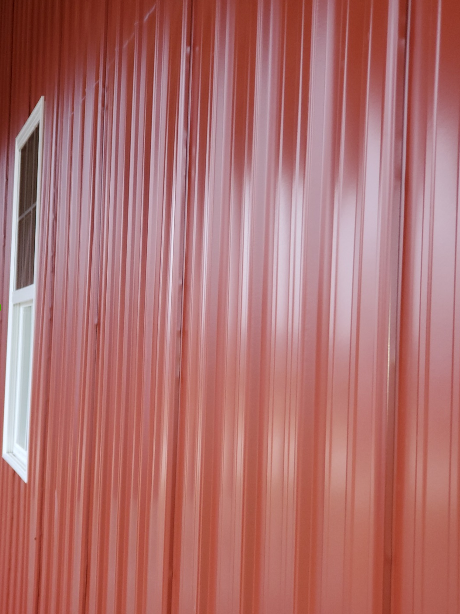
DEAR TYLER: Most often this is caused by handling issues before steel is on ground at your jobsite – after first time I had to deal with it I made it a point to double check overlapping edges of all skids for damage before driver sped away to his or her next delivery. Any appearance of a wave on this edge and back on truck it went.
Your randomness issues appear to be from jobsite handling however they oftentimes can be bent back carefully by covering wave with a soft cloth and using a pair of pliers. Even if slightly over bent back, it will lay flat once screws are installed on side away from overlap.
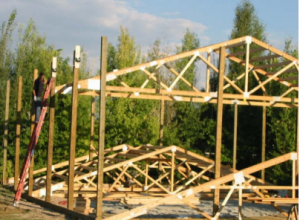 DEAR POLE BARN GURU: Putting up a metal truss pole barn that calls for 12′ post centers and want to use 16′ centers for the truss using 16′ 2×6 for the purlins 30 cups per bay. Looking to get more length to barn this way. Minimum wind and snow load central Mississippi agriculture barn building housing mostly hay. Will this work or is 12′ max on metal truss bay width? 3 bays 16′ would garner me 50′ length with overhang or two 12′ bays on the end and 16 bay in middle would get me 42′ of length with foot overhang. Would either be sturdy enough for this application. TOMMY in ACKERMAN
DEAR POLE BARN GURU: Putting up a metal truss pole barn that calls for 12′ post centers and want to use 16′ centers for the truss using 16′ 2×6 for the purlins 30 cups per bay. Looking to get more length to barn this way. Minimum wind and snow load central Mississippi agriculture barn building housing mostly hay. Will this work or is 12′ max on metal truss bay width? 3 bays 16′ would garner me 50′ length with overhang or two 12′ bays on the end and 16 bay in middle would get me 42′ of length with foot overhang. Would either be sturdy enough for this application. TOMMY in ACKERMAN
DEAR TOMMY: Those welded up steel trusses are designed to support bare minimal loads at 12 foot on center. Spacing them any farther apart is nothing short of a recipe for failure. Also, unless you have access to some very high strength 2×6 for purlins, they would be over stressed in bending and deflect noticeably. If you want or need a longer building, invest in more trusses.
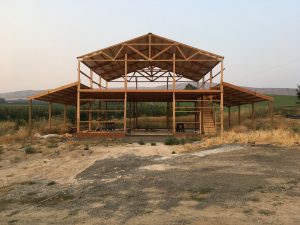 DEAR POLE BARN GURU: Monitor barns -is it crazy to think/have 14 foot “wings” and 24 wide center? Thinking 52 wide with 14-24-14 sizing. Seems most have narrower center. Is there a reason? STEVE in WEISER
DEAR POLE BARN GURU: Monitor barns -is it crazy to think/have 14 foot “wings” and 24 wide center? Thinking 52 wide with 14-24-14 sizing. Seems most have narrower center. Is there a reason? STEVE in WEISER
DEAR STEVE: Not crazy at all, we have had clients with raised center of monitor as wide as 80′. Ultimately it comes down to what dimensions work best for your wants and needs.
Often monitor buildings are used for horse stall barns, where raised center is an aisleway. In this scenario 12-16′ center widths work very well for aisles.
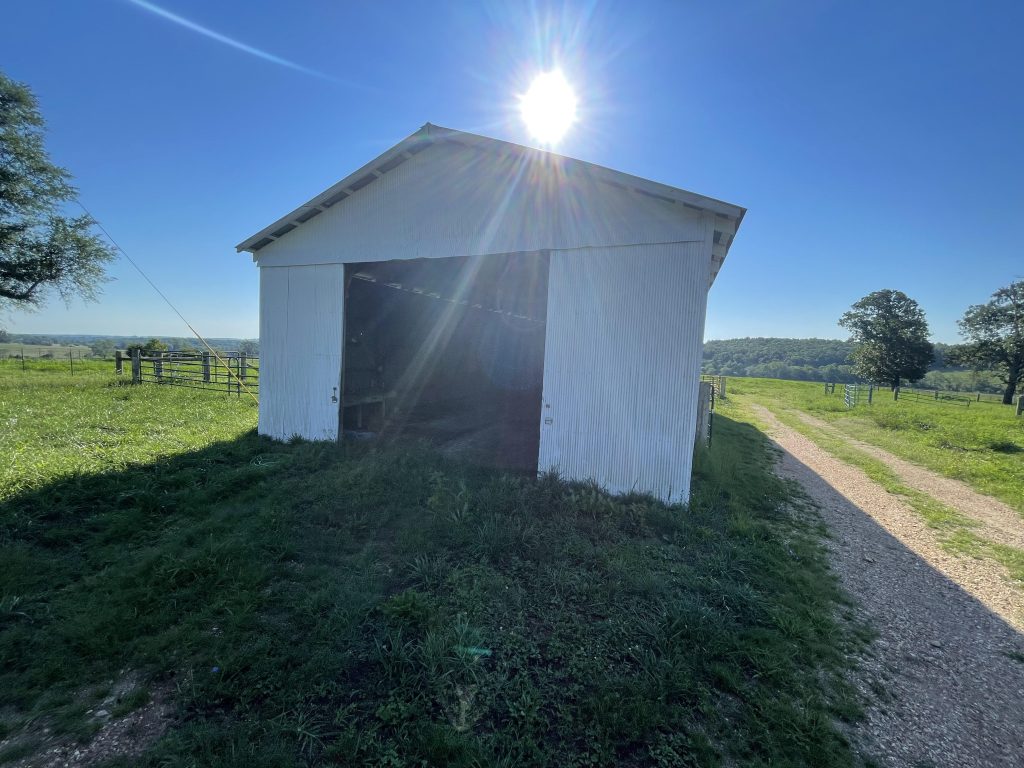
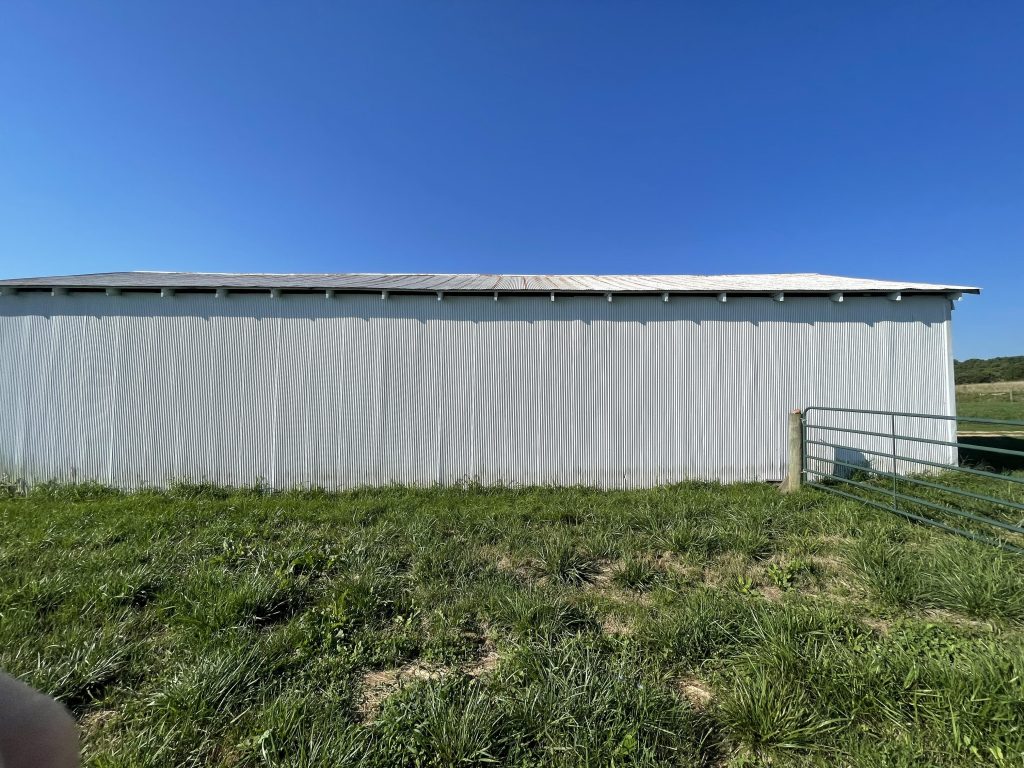
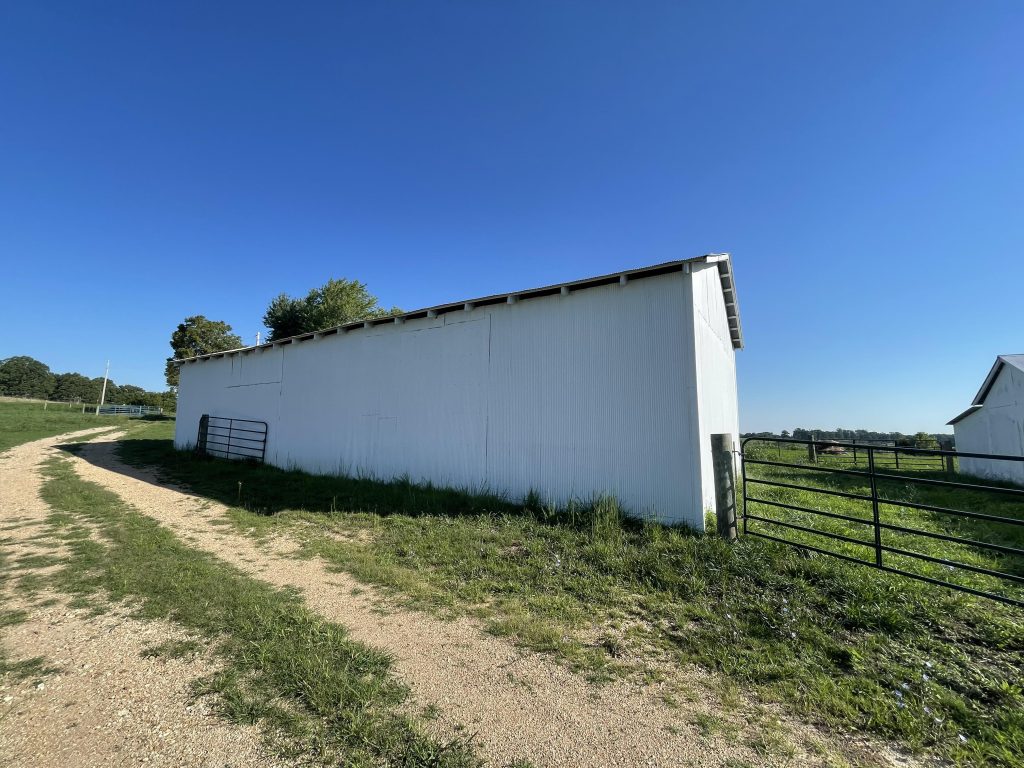
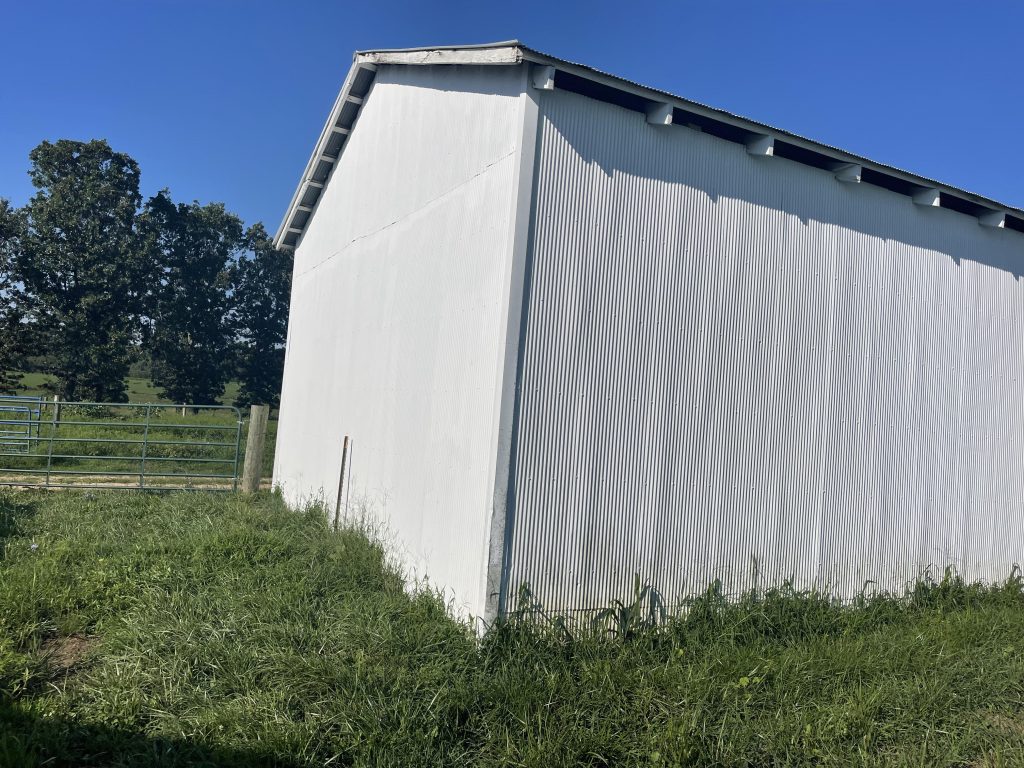
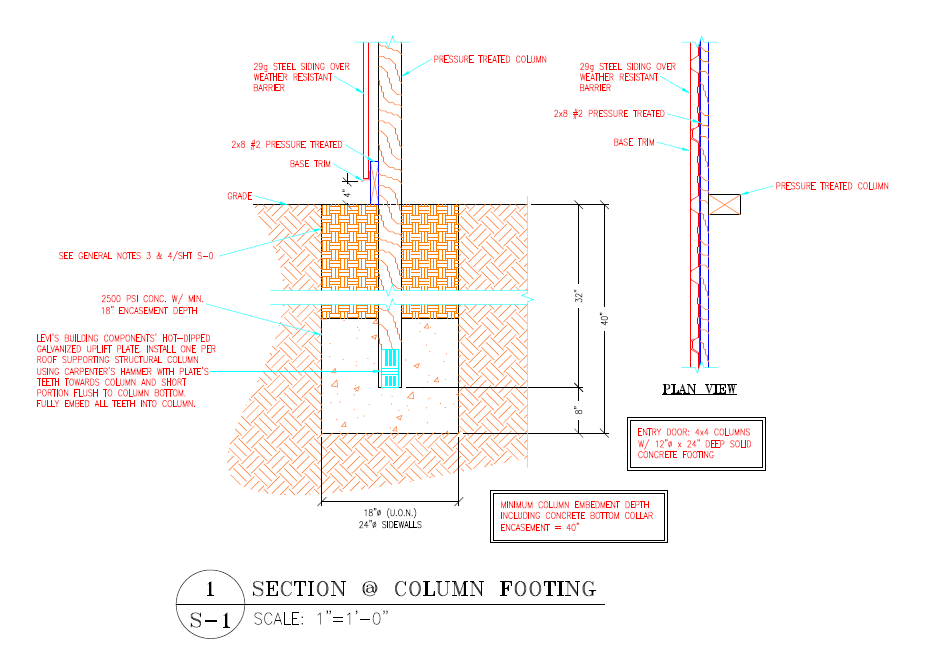
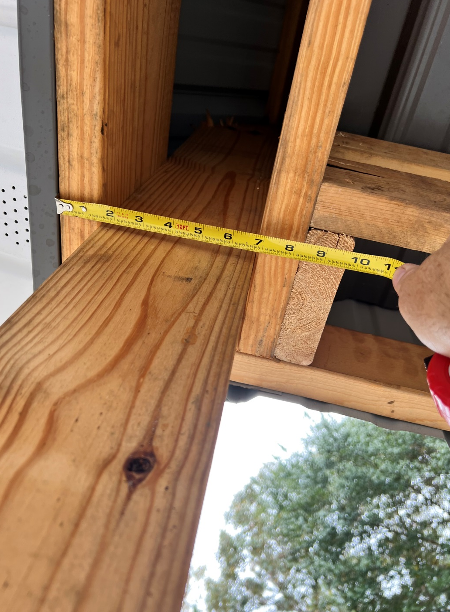
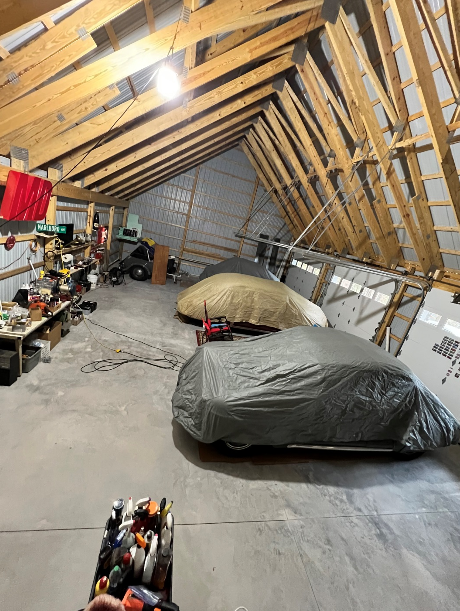

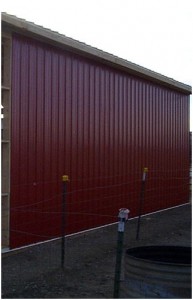 Look up at the top of the red wall steel. What do you see?
Look up at the top of the red wall steel. What do you see?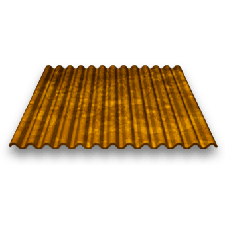 If you are going for the weathered or aged look of Disneyland’s Big Thunder Mountain Railroad on your building, then ABC’s Rustic Trail product is the perfect solution for your project. The Rustic Trail panel is recommended for installation in low humidity, arid and semi-arid climates.
If you are going for the weathered or aged look of Disneyland’s Big Thunder Mountain Railroad on your building, then ABC’s Rustic Trail product is the perfect solution for your project. The Rustic Trail panel is recommended for installation in low humidity, arid and semi-arid climates.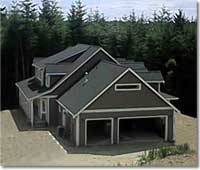 We recently had a client send us the photos seen with this article. Their four year old building had developed a series of rust through holes and the client wanted to know if the steel panels were still under warranty.
We recently had a client send us the photos seen with this article. Their four year old building had developed a series of rust through holes and the client wanted to know if the steel panels were still under warranty.





